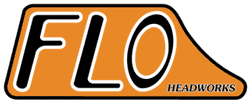 |
FLO Headworks: |
|
|
|
|
Detonation is a bad-sounding word, and it
does bad things to your Harley engine. In a nutshell, detonation is
incomplete combustion—it robs power and decreases engine life.
This article describes what detonation is, why it’s a problem for Harley motors in particular, and how it’s cured. Detonation definedA lot of people think they know what detonation is and when it’s present, but for most detonation is undetectable. You can’t feel it, you can’t see it, and most of the time you can’t hear it. Here’s some more bad news: If you are riding a Harley on today’s pump gas, there is a very high possibility it could be going on right now inside your engine. Detonation is the premature burning of the fuel-air mixture in your combustion chamber. Usually it’s caused when the spark from the spark plug creates an incomplete “flame” from the fuel-air mixture during the combustion cycle. The cure for detonation involves some hot-rod jargon: atomization, the microscopic process of gasoline changing from liquid to vapor, in combination with air; flame travel, the penetration of the “fire” throughout your combustion chamber as the spark plug explodes the fuel-air vapor; and complete burn, the extent to which the fuel-air vapor is consumed inside the combustion chamber before being expelled through the exhaust port. Oh yes, and there’s one more term: volumetric efficiency, the ratio between actual and theoretical flow of air through your engine’s combustion chambers. That’s what determines how well your engine “breathes,” and in some cases, whether it lives or dies. The grim truth about today’s gasIn 1985 the EPA passed a law that drastically changed the quality of pump gasoline. Prior to this law, premium gas was rated at 98 octane with four grams of lead per gallon. In case you didn’t know, lead cools your valves and generally makes for a longer-lasting engine. Today the best pump gas has 92-rated octane and no lead. As a result, your cylinder heads have become the most vulnerable part of your Harley’s engine. If they don’t atomize your fuel perfectly, your engine will run hot and be down on power. Even worse things can happen. Detonation and high combustion chamber temperatures, which were not a problem when lead was present in high-octane pump gas, are now causing expensive breakdowns in older-generation Harley engines running on today’s gas: warpage and cracks, loosening of valve seats and guides, burnt valves and seats, bronze valve guide seizing, gauling and excessive wear of valve stems, loss of spring tension in rings, and in extreme cases, holes burned right through pistons. The bottom line is, your beautiful older Harley’s cylinder heads are vulnerable to the evils of detonation. Hey, they weren’t designed for today’s lousy gas! But we said there was a cure. . . . The solution—with a catch!Cylinder head work, or just plain “head work” as it’s known in the trade, can make your vintage Harley run faster and longer than the original heads on old-fashioned gas. Head work consists of porting and dual plugging, two separate but complementary processes. We cover porting in a separate article, Harley Porting Secrets. The rest of this article explains dual plugging. |
Your H-D motor has a single spark plug per cylinder, located on the left side of the combustion chamber. This chamber is deeply concave in shape and partially filled with the piston dome at the point of ignition. Because of the location of this single spark plug and the piston dome, the flame travel is partially blocked and does not cover the piston evenly. The result is lost power and detonation, or “pinging.” An inexperience tuner may recommend high-compression pistons to boost the horsepower, but aftermarket high-compression pistons only increase detonation. Complete burn is the answerThe secret of greater power from your Harley is not necessarily greater compression; it’s more complete combustion. In 1970 Warner Riley set a new land speed record at Bonneville of 202 mph with a Harley-Davidson. In 1972 he went faster with lower-compression pistons. It was later discovered that the flame front was partially blocked by his high-compression piston domes. Flame travel notches were used in the later 1970s by many knowledgeable engine builders. So, as it turns out, the cure for detonation also happens to provide greater performance: “complete burn” of the air-fuel mixture in your Harley’s combustion chambers. The dual plugging solutionHow can complete burn best be achieved in your street engine? Your Harley’s engine design goes back to the early part of this century, a time when aircraft manufacturers were having the same problems with detonation and power loss. In 1917, Liberty Aircraft discovered that simply adding another spark plug to the opposite side of the combustion chamber and increasing the voltage at the plugs would cure detonation and increase power. The same dual plugging solution was incorporated by Continental and Lycoming in the 1920s and 30s. Primarily used as a safety factor, it also reduced spark plug fouling and detonation and increased RPM.. For exactly the same reasons, your Harley motor can benefit from dual plugging. Dual plugging will “undo” the problems with its combustion chamber design and help your Harley run happily on unleaded gas. Dual plugging alone of a stock motor will eliminate most detonation, stop plug fouling and hard starting, increase horsepower by five percent or more, increase gas mileage, double spark plug life, and lower emissions. Some tuners have reported six to eight percent increase in gas mileage. The combination of dual plugging and cylinder head porting, when carried out by experienced professionals, can transform your Harley into a faster, smoother-running, and cooler running machine. For tuning advice about your Harley-Davidson, call the FLO Headworks customer service hotline, 805-481-6300.
|
|
Related Articles |
Return To |
|
© 2000-2014, FLO
Headworks. Contact Perry Kime at 805-481-6300 or via
e-mail. |